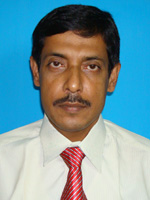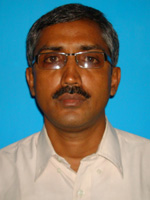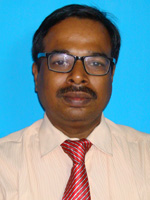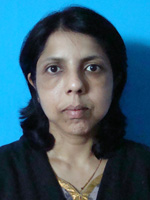Departmental profile
As per regulations’ MSVE 2016 and other guidelines of Veterinary Council of India (VCI), the rules and regulations has been framed for smooth pursuance of B.V.Sc. & A.H. study programme in relation to examinations and evaluation of said courses under VCI syllabus. The rules and regulations have been implemented in the Faculty of Veterinary and Animal Sciences, West Bengal University of Animal and Fishery Sciences from the academic session 2009-10. The Department of Veterinary Surgery & Radiology is imparting teaching to UG, PG and Ph. D courses as per guidelines of VCI and ICAR since beginning. Apart from our teaching and research activities, the Department is actively engaged in treatment of routine surgical cases in large and small animal clinics regularly. The teachers and research scholars are involved with treating large numbers of clinical patients in the clinic and apt for drawing the solution through their research activities for the clinical problems of animals directly involved with farmers and the pet owners.
The department attended many operations coming from different parts of our State. The department also organized Ophthalmology outpatient unit and eye surgery & microsurgery unit separately. Government of India, Department of Science and Technology has given this department FIST project to upgrade the infrastructure. A number of external funded projects from DBT, DST, ICAR, ICMR and many more pharmaceutical companies have been carried out and few projects are running in this department. At present it has the credit of two patent and few more on the process.
Faculty Member
Faculty: Faculty of Veterinary & Animal Sciences
Head of the Department. : Prof. Debaki GhoshDR. SAMIT KUMAR NANDI
Qualification : M.V.Sc & Ph. D.
Designation : Professor
Email : samitnandi1967@gmail.com
Phone :9433111065PUBLICATIONS
NATIONAL: 68
INTERNATIONAL: 93
POPULAR ARTICLES: 08
MANUAL: 03
BOOKS /BOOKS CHAPTER: 21STUDENT GUIDANCE
PASS OUT: 24
CURRENT: 02View Detail Profile DR. DEBAKI GHOSH
Qualification : M.V.Sc. & Ph. D.
Designation : Professor
Email : drdghosh08@gmail.com
Phone : 9433120555PUBLICATIONS
NATIONAL: 50
INTERNATIONAL: 10
POPULAR ARTICLES: 03
MANUAL: 07
BOOKS/ BOOKS CHAPTER: –STUDENT GUIDANCE
PASS OUT: 22
CURRENT: 01View Detail Profile DR. SAMAR HALDER
Qualification : M.V.Sc. & Ph. D.
Designation : Professor
Email : samarvet@gmail.com
Phone : 9836726063PUBLICATIONS
NATIONAL: 30
INTERNATIONAL: 02
POPULAR ARTICLES: 04
MANUAL: 04
BOOKS/ BOOKS CHAPTER: 01STUDENT GUIDANCE
PASS OUT: 12
CURRENT: –View Detail Profile DR. (MRS.) SARBANI HAZRA
Qualification : M.V.Sc. & Ph. D.
Designation : Professor
Email : shazrakon@yahoo.co.in
Phone : 9433125696PUBLICATIONS
NATIONAL: 21
INTERNATIONAL: 26
POPULAR ARTICLES: –
MANUAL: 03
BOOKS /BOOKS CHAPTER: 01STUDENT GUIDANCE
PASS OUT: 11
CURRENT: 02View Detail Profile Course
Course offered:Undergraduate Programme Course No. Course Title Credit Hours Unit 1 VETERINARY GENERAL SURGERY 2+1 Unit 2 VETERINARY ANAESTHESIOLOGY 2+1 Unit 3 VETERINARY DIAGNOSTIC IMAGING TECHNIQUES 2+1 Unit 4 REGIONAL SURGERY-I 2+1 Unit 5 REGIONAL SURGERY-II 2+1 Unit 6 ORTHOPEDICS AND LAMENESS 2+1 Post-graduate programme Course No. Course Title Credit Hours VSR 601 Principles of surgery 2+0 VSR 602 Clinical practice I 0+3 VSR-603 Clinical practice II 0+3 VSR 604 Small animal anaesthesia 2+1 VSR 605 Large animal anaesthesia 2+1 VSR 606 Diagnostic imaging techniques 2+1 VSR 607 Veterinary ophthalmology and dentistry 1+1 VSR 608 Small animal soft tissue surgery 2+1 VSR 609 Large animal soft tissue surgery 2+1 VSR 610 Orthopaedic and limb surgery 2+1 VSR 691 Master’s seminar 1+0 VSR 699 Master’s research 20 Ph D Course No. Course Title Credit Hours VSR 701 Clinical surgical practice I 0+2 VSR 702 Clinical surgical practice II 0+2 VSR 703 Clinical surgical practice III 0+2 VSR 704 Anaesthesia of wild and laboratory animals 1+1 VSR 705 Advances in anaesthesiology 2+1 VSR 706 Advances in diagnostic imaging techniques 2+1 VSR 707 Neurosurgery 2+1 VSR 708 Experimental surgical techniques in animals 1+1 VSR 789 Special problems in anaesthesia 0+2 VSR 790 Special problems in surgery 0+2 VSR 791 Doctoral seminar I 1+0 VSR 792 Doctoral seminar II 1+0 VSR 799 Doctoral research 45 * Compulsory for Master’s programme; ** Compulsory for Doctoral programme
Project Completed / ongoing
Ongoing Sl.No. Title Name of PI Period Funding Agency Budget (Rs. in lakhs) 1 Developing nanoformulations of crystalline protein for rendering neuroprotection and cytoprotection to cornea and retina Dr Sarbani Hazra 2018 DST 73.50 2 Injectable Nanofibrous carriers as the next generation biomimetic 3D matrix for cartilage repair Dr Sarbani Hazra 2020 SERB 2.00 3 Development of Polypyrrole Coated Mg alloys for Degradable Fracture Fixation Devices” Dr. Samit Kumar Nandi, CO-PI 2020-2023 DST 8.14 4 Engineering nature inspired peptide based nanomedicine for blood clotting and wound healing” Dr. Samit Kumar Nandi, CO-PI 2019-2022 DBT 20.84 5 Development of fish collagen-doped bioactive glass electrospun mats/fibers for diabetic wound healing Dr. Samit Kumar Nandi 2019-2022 DBT 18.00 Completed Sl.No. Title Name of PI Period Funding Agency Budget (Rs. in lakhs) 1 Influence of corneal nerve regeneration on wound healing and its therapeutic modulation. Dr Sarbani Hazra 2014-2017 DST 52.00 2 Delivery of drugs and cells to the cornea using silk protein –A novel therapeutic approach. Dr Sarbani Hazra 2014-2017 DBT 83.40 3 Effect of Ultraviolet-A/Riboflavin Corneal Collagen Cross-linking on the Virulence Factor of Fungi. CO-PI-Dr. Sarbani Hazra, PI- Dr Sujata Das 2013-2016 DBT 30.00 4 Nanotechnology based drug delivery system for prevention of cataract: Proof of concept in a Rabbit Model” Dr Sarbani Hazra 2011-2015 DBT 93.56 5 Surgical and Pharmacological prevention of posterior capsular opacification Dr Sarbani Hazra 2008-2011 CSIR 25.00 6 Developing new strategies for prevention of corneal blindness in dogs Dr Sarbani Hazra 2018 DBT 35.00 7 North East Silk Based Bio-engineered Vascular Conduits Dr. Samit Kumar Nandi, Collaborating PI 2017-2020 DBT 72.00 8 Development of Animal cartilage for surgical implantation in Microtia and Rhinoplasty of human patient Dr. Samit Kumar Nandi 2013-2016 DBT 44.66 9 Development of novel tissue engineered silk biomaterial based wound dressing patch for diabetic foot ulcers Dr. Samit Kumar Nandi 2014-2017 DBT 56.96 10 Multi-layer Customized Skin Graft for Full Thickness Wound Dr. Samit Kumar Nandi 2014-2017 DBT 28.895 11 Development of bioactive ceramic coating on orthopedic implants (metallic) for sustained localized delivery of bisphosphonates to improve fixation Dr. Samit Kumar Nandi, CO-PI 2010-2011 DBT 22.00 12 Development of marine biomaterials alone and in combination with conventional and unconventional growth factors in bone tissue engineering Dr. Samit Kumar Nandi 2010-2013 DBT 9.00 13 Development of ceramic-based implantable delivery system for sustained release of the drugs for the treatment of osteomyelitis in human patients. Dr. Samit Kumar Nandi, CO-PI 2007-2010 DST 30.00 14 Bovine lameness with special reference to pathogenesis and pain perception. Dr. Samit Kumar Nandi 2005-2008 ICAR 7.51 15 Experiential Learning Unit-setting up of Facilities for Enterpreneurship – Critical care Unit Dr. D. Ghosh 2013 ICAR 80.00 16 RKVY project funded by Govt. of India, Ministry of Agriculture Dr. D. Ghosh 2015-2016 ARD Deptt. Govt. of W.B 25.00 Research Findings
Project Research Findings Project on “Multi-layer Customized Skin Graft for Full Thickness Wound” in Department of Biotechnology, Government of India as Principal Investigator, collaboration with IIT, Kharagpur [No. BT/PR7818/MED /32/279/2013 Dated 5.11.2015}] - Objective: Based on results of in vitro experiments, in vivo studies will be carried out on rabbit model with respect to the existing skin graft available in the market for evaluation of healing kinetics, and molecular expression through histopathological, immunohistochemical analysis. The scaffold will be made aseptic and will be placed on the generated full thickness surgical wounds following animal ethical guidelines. The healing efficacy of the wound bed and the animal health will be closely monitored. The animal will be sacrificed at different time intervals for biological and immunohistochemical evaluation for healing efficacy. Additionally, re-epithelialization potential of scaffold will be evaluated in the animal model.
- Base line work: The said material has been developed in School of Medical Science and Technology, Indian Institute of Technology, Kharagpur-721302 and tested in vitro with superior outcome. The animal application in rabbit model with the material shows tremendous promise in complicated wound healing in animal vis-à-vis human especially in burn patient.
“Development of bioactive ceramic coating on orthopedic implants (metallic) for sustained localized delivery of bisphosphonates to improve fixation (T.1 (23)/TIFA/2008-WBUAFS Date-) 27.12.2010-27.12.2011 Collaborative project with CGCRI, Kolkata sponsored by Department of Science and Technology, Ministry of Science and Technology, Government of India” With the in vivo results, bioactive ceramic coated metallic implants showed promising results as bone grafting material in an experimental bone defect model and can be used for sustained, localized delivery of bisphosphonates to improve fixation. Based on the results, it was observed that the metallic implant coated with bioactive ceramic both in biomimetic and plasma spray method acted as scaffold material in bone defect model and its fixation in bone was improved in presence of bisphosphonates. These drug loaded implants can be successfully used to reduce proximal peri-implant bone loss (osteolysis) and hence to provide improved fixation of the implant at the damaged tissue site of bone. The work was carried out as a part of DST sponsored project in collaboration with Bioceramic and Coating Division, CGCRI, Jadavpur, Kolkata. National Bioscience Award Project, 2008 for career Development, Department of Biotechnology, Ministry of Science and Technology, Government of India on “Development of marine biomaterials alone and in combination with conventional and unconventional growth factors in bone tissue engineering (BT/HRD/34/15/2008 dated 26.05.2010) 1.6.2010 to 31.5.2013” The present study was conducted utilizing porous chitosan, marine coral and sponge alone and in combination with BMP-2, IGF-1 and snail extract in a critical sized bone defect model in rabbit tibia and compared. Before conducting animal trial, identification, isolation of the snail Achatina fulica including partial biochemical characterization was done. Based on the results of in vivo application of the said material, it is concluded that IGF-1 and snail extract impregnated porous chitosan, marine coral and sponge offer satisfactory and better results in terms of bone healing as compared to BMP-2 impregnated chitosan and chitosan alone. These three marine based biomaterials may be utilized as a carrier for delivery of several growth factors in orthopaedic surgery apart from its application as biocompatible bone graft substitute. The results on the animal application have tremendous promise and may be tried in human orthopaedic surgery in future Development of Animal cartilage for surgical implantation in Microtia and Rhinoplasty of human patient” in Department of Biotechnology, Government of India sponsored by Department of Biotechnology, Ministry of Science and Technology, Government of India [Sanction No. BT/PR7292/AAQ/1/534/2012 Dated 5.8.2013 By this project a process for preparing animal choncal cartilage for transplantation was developed for its application in human plastic surgery, especially in rhinoplasty and microtia operations. The outcome of the experimentation shows the potentiality of the product (processed goat choncal cartilage) as a xeno-transplant material. It also revealed sufficient possibilities for large scale application in plastic surgery as low cost material and may have tremendous scope for product development and subsequent commercialization. Project on “Development of Ceramic – based implantable delivery system for sustained release of the drugs for the treatment of Osteomyelitis in human patients” Department of Science and Technology, Ministry of Science and Technology, Government of India, (T.1(7)/TIFA/2006-CGCRI dated 23/01/2007) 1.3.2007-31.10.2009 Antibiotic (Ceftriaxone and Sulbactum) impregnated porous bioceramic and bioactive glass local delivery system have been developed and extensively trailed in animal model. The successful outcome of the said work in animal model was applied in clinical cases of human osteomyelitis patients in R. G. Kar Medical College and Hospital, Kolkata. The work has tremendous promise in low cost treatment modalities in animal vi-a-vis human osteomyelitis patients. The project work work was a collaborative effort among Bioceramic and Coating Divison, CGCRI, Jadavpur, Kolkata, West Bengal University of Animal & Fishery Sciences and R. G. Kar Medical College and Hospital, Kolkata respectively Project on “Development of novel tissue engineered silk biomaterial based wound dressing patch for diabetic foot ulcers” in Department of Biotechnology, Government of India as Principal Investigator, collaboration with IIT, Guwahati, [No. BT/505/NE /TBP/2013 Dated 24.2.2014 - Researchers have synthesized antibiotic-coated nanofibrous mats that can be used as material to dress and heal wounds caused by disease-related foot ulcers and various infections.
- Chronic wounds like diabetic foot ulcers, venous ulcers and pressure sores affect millions globally. Such wounds are difficult to heal and sometimes necessitate amputations.
- To find an alternative dressing material for faster healing, scientists from the Indian Institute of Technology (IIT), Guwahati and West Bengal University of Animal and Fishery Sciences, Kolkata prepared the nanofibrous mats by blending silk protein fibroin with a polymer. The mats were then loaded with epidermal growth factor and coated with antibiotic ciprofloxacin.
- Besides having capacity to contain swelling, the mats efficiently released the antibiotic which inhibited the growth of infectious bacteria. The mats were able to seal wounds in rabbits with test subjects growing all the cellular components of skin such as collagen bundles, skin sebaceous glands, hair follicles, nerve endings and blood vessels within three weeks.
- This ability to grow all the skin components suggests that the mats can potentially achieve scar-less wound healing.
Ad-hoc Project on Bovine lameness with special reference to pathogenesis and pain perception (F. No. 3(7)/2005-GA-II dated 23.03.2006) 29.12.05 to 28.12.08 Indian Council of Agricultural Research (ICAR), Government of India Of the emerging/alarming diseases/conditions, foot lesions in dairy cattle are of paramount importance. The work has direct application in the country where bovine lameness has emerged as one of the serious concerns to Veterinarian and a major cause of economic loss to the farmers. The ICAR Ad-hoc research project on “Bovine lameness with special reference to pathogenesis and pain perception” was conducted in selected organized dairy farms of six districts of West Bengal of different agro-climatic zones. The study was undertaken to establish the etiopathogenesis of the disease, optimal management system and thus to evolve a therapeutic and preventive package which would ultimately help the economy of the cattle farmers and to prevent the economic losses of farmers in part and country as a whole. Instruments
Instrument Name ERG machine Operating Microscope Fluorescent Microscope pH Meter Deep Freeze (-330C) Routine Surgical Instruments Autoclave Shaker Water bath Electronic Balance Cryocan container Refrigerator Small Distillation unit




